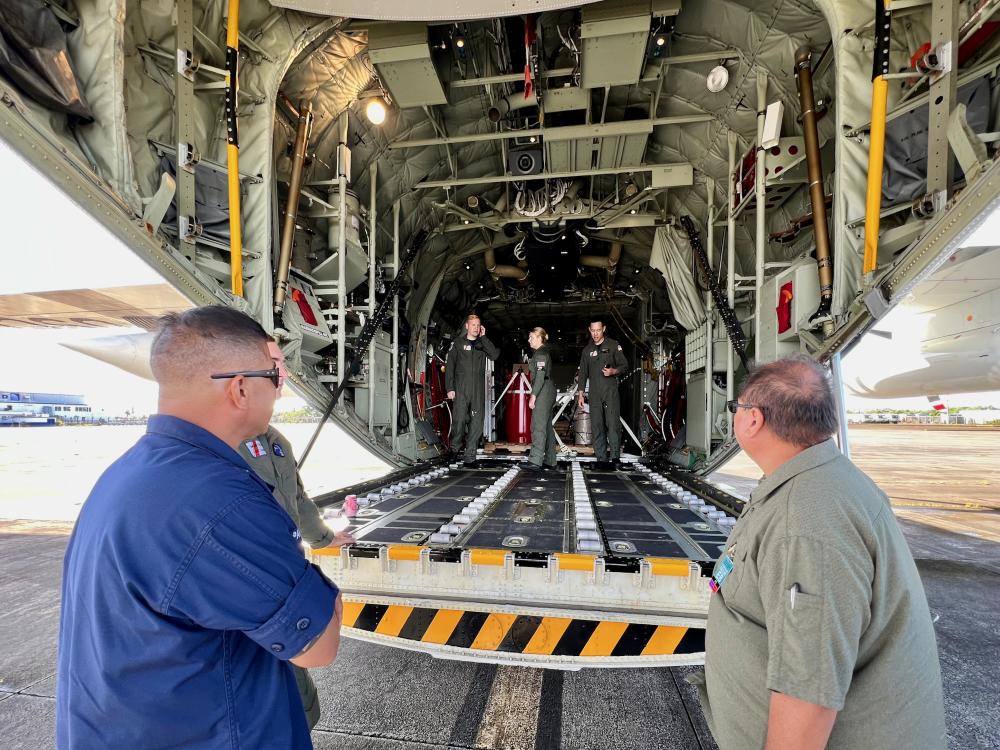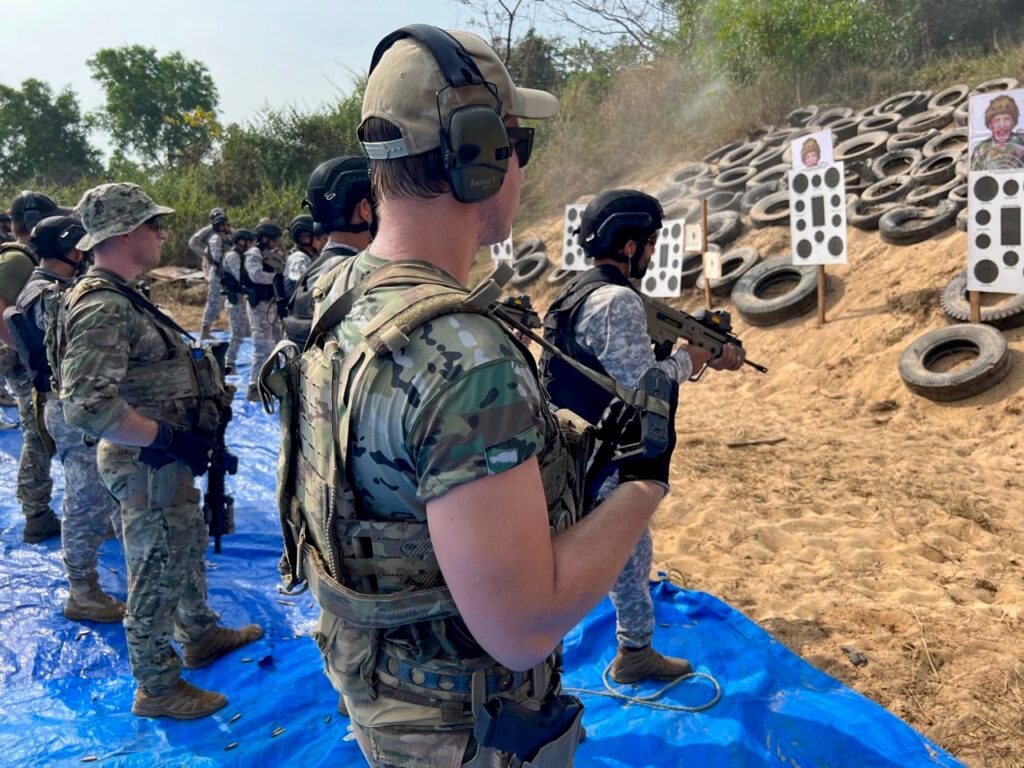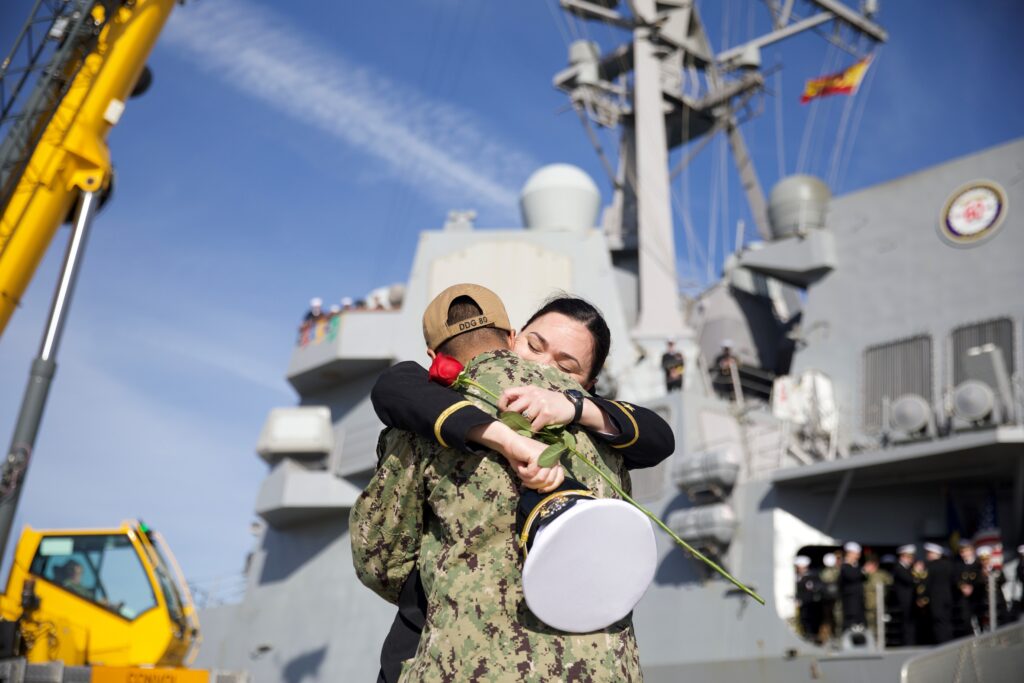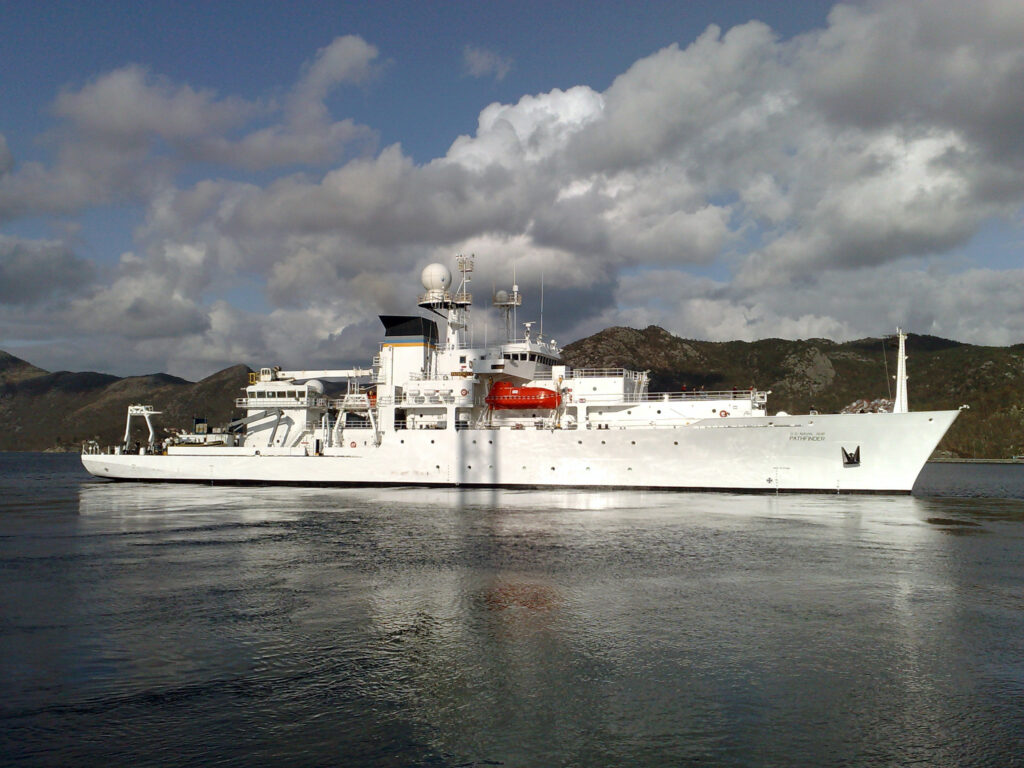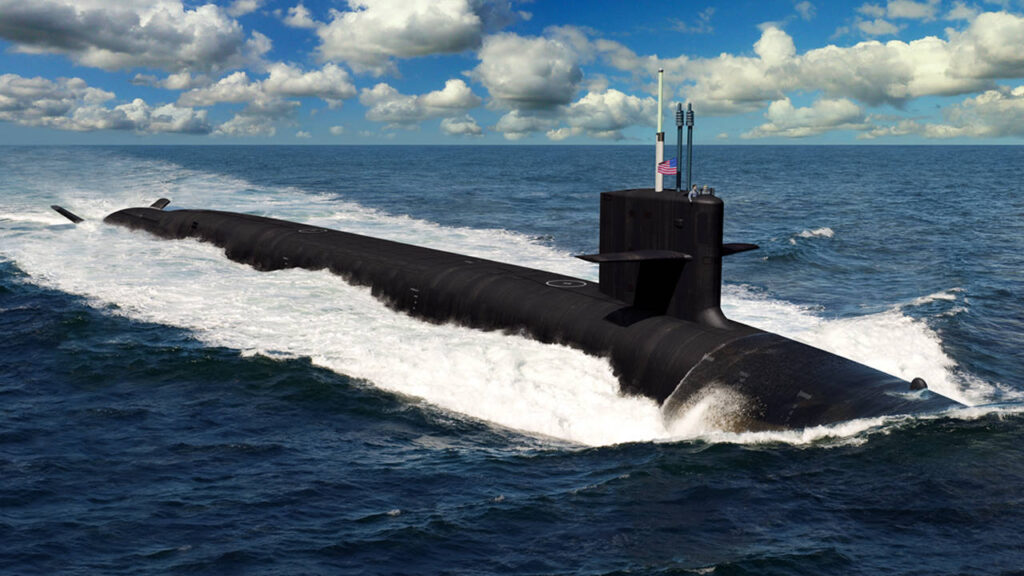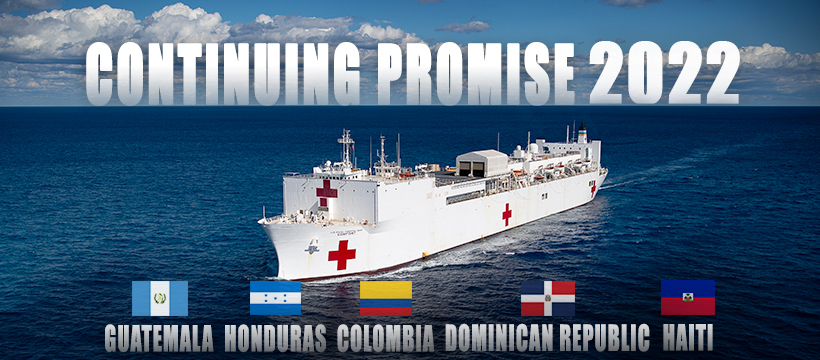Cohesion at Sea: Maritime Deterrence and Defense throughout 2022
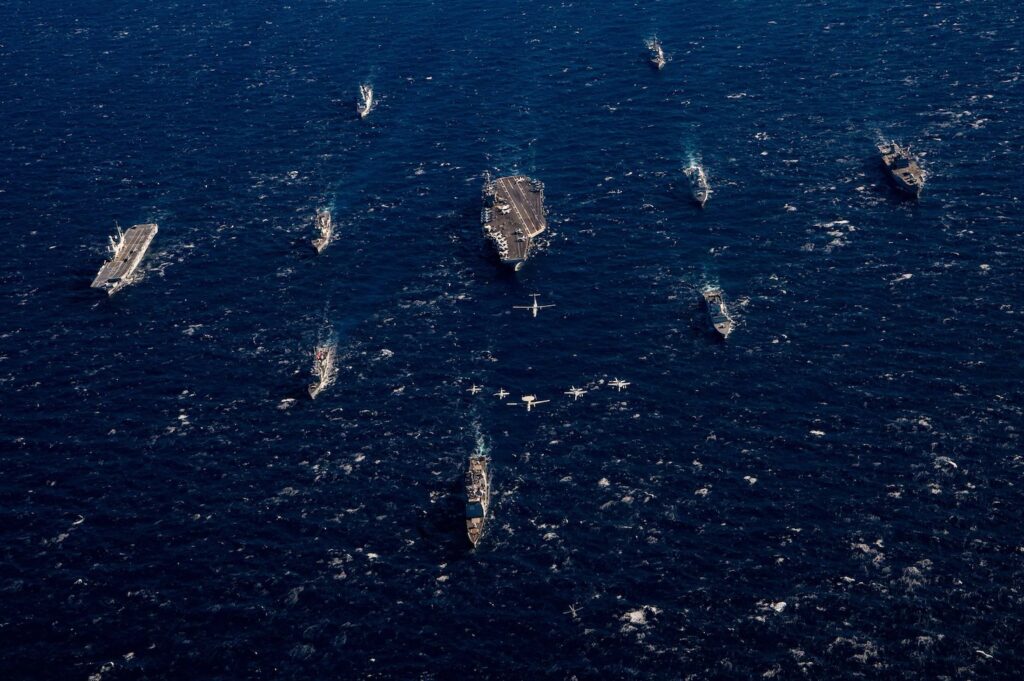
Naples, Italy — In the Baltic Sea, Estonian troops and U.S. Marines rehearse amphibious assault drills, storming the beach and quickly seizing objectives in concert as the Wasp-class amphibious assault ship USS Kearsarge (LHD 3) patrols the horizon.
Farther south, in the Mediterranean Sea, a French Navy Rafale lands aboard the Nimitz-class aircraft carrier USS George H.W. Bush (CVN 77) during multicarrier operations comprising Bush, the FS Charles de Gaulle (R 91) Carrier Strike Group (CSG), and ITS Cavour (C-550) CSG.
In the Atlantic Ocean, the Officer of the Deck on the first-in-class aircraft carrier USS Gerald R. Ford (CVN 78) looks out at the Canadian, Danish, Dutch, French, German, and Spanish ships in company during Silent Wolverine, an exercise designed to test the carrier’s capabilities through integrated high-end naval warfare scenarios during its first overseas deployment.
Through combined evolutions like these, NATO Allied and partner maritime forces exhibited unparalleled cooperation and interoperability throughout 2022. From the High North to the Mediterranean, and in nearly every body of water in between, these navies and coast guards embarked on a banner year of sustained, uncompromising strength and vigilance throughout the European theater. Lt. Cmdr. Tyler Barker of U.S. Naval Forces Europe-Africa.
“Our Allies and close partners like Finland and Sweden have never been more unified than we are today,” said Adm. Stuart Munsch, commander, U.S. Naval Forces Europe-Africa (NAVEUR-NAVAF) and commander, Allied Joint Force Command Naples. “Our interoperability at sea delivers true warfighting advantage for NATO, enabling the Alliance to deter and defend In the midst of armed conflict in Europe.”
The ships of the Harry S. Truman carrier strike group (HSTCSG), including the Royal Norwegian Navy frigate HNoMS Fridtjof Nansen (F310), kicked off 2022 with a bang and set the pace for the year to come with port visits to Cyprus, Greece, Spain, and Türkiye. Deployed to the NAVEUR-NAVAF area of operations in December 2021, the HSTCSG remained in the region until August 2022, flying hundreds of sorties in support of NATO’s enhanced Air Policing and other missions, safeguarding the integrity of Allied airspace before turning over these duties to the George H.W. Bush Carrier Strike Group (GHWBCSG).
The HSTCSG, along with other Allied and partner maritime forces, came under NATO command and control for vigilance activities Neptune Strike 22.1 and Neptune Shield, in January and May, respectively. Neptune Strike 22.1 marked the first time since the Cold War NATO assumed command and control of a U.S. carrier strike group.
The GHWBCSG picked up where the HSTCSG left off, leading the way during Neptune Strike 22.2 in October, the eighth phase of the overall Project Neptune series, which includes named activities as well as vignettes within Allied strike group training events.
“The full integration into NATO of powerful Allied Carrier Strike and Expeditionary Strike Groups, and additional capabilities from across the Alliance, is a perfect example of our deter and defend strategy,” said Rear Adm. James Morley, deputy commander, Naval Striking and Support Forces NATO (STRIKFORNATO). “We demonstrate through coordinated Vigilance Activities and routine operations just how closely national and Alliance military plans are aligned, as we exploit every opportunity to improve interoperability at sea, in the air, and on the ground, seamlessly aligning military effects with political objectives.”
This flexible command and control structure and rapid and seamless integration of Allied forces in multiple domains was a hallmark of NATO operations in 2022. Throughout the year, Allied strike groups, including those gathered around aircraft carriers Harry S. Truman, George H.W. Bush, Gerald R. Ford, FS Charles de Gaulle, ITS Cavour, HMS Queen Elizabeth (R08), and ESPS Juan Carlos I (L-61), validated NATO’s ability to coalesce credible combat power. Allied surface combatants routinely integrated into other nations’ strike groups, too, increasing the pace and scale of multinational strike group interchangeability.
While these strike groups ensured the integrity of European waters and airspace, Allied amphibious forces also enhanced their effectiveness, operating in a variety of climates and conditions, from Norwegian and Icelandic fjords to the sands of North Africa and to the rocky beaches and islands of the Aegean and Mediterranean Seas. Though a series of bilateral and multinational exercises and training events, the Kearsarge Amphibious Ready Group (ARG) and embarked 22nd Marine Expeditionary Unit (MEU) sharpened their skills in joint and coalition amphibious evolutions as they bolstered trust and refined tactics with like-minded nations.
“Bringing the capability and expertise of the Kearsarge ARG-MEU into theater fostered relations with our counterparts in Europe and Africa and provided some of the best hands-on training our team could have hoped for,” said Capt. Aaron Kelley, commander, Kearsarge ARG and Amphibious Squadron (PHIBRON) Six. “A recurring theme our team took away from deployment is that our Allies and partners are incredibly proficient at what they do, and training together allows us to become stronger together.”
These evolutions paid dividends on all sides and laid a foundation for continued collective improvement in amphibious operations across the Alliance, all while demonstrating NATO’s resolve and commitment to the region. U.S. forces gained invaluable experience operating in European areas, while European Allies and partners honed their skills alongside their American counterparts.
“Exercises and operations with NATO nations, including USS Kearsarge ARG-22 MEU’s participation in the Estonian exercise Siil, are invaluable toward enhancing our overall capability,” said Commodore Jüri Saska, commander of the Estonian Navy. “All of our Allies and partners are committed to the security and stability of the Baltic Sea region, and we validate that commitment through our coordinated work together in the maritime domain.”
Numerous U.S., Allied, and partner surface combatants, including cruisers, destroyers, frigates and corvettes, delivered continuous presence throughout the region, whether sailing with a strike group, or independently. These warships, hailing from multiple nations, surface action groups, and Standing NATO Maritime Groups (SNMG), manned the watch, 24 hours a day, seven days a week, providing unremitting vigilance across the continent. These ships joined an extensive array of bilateral and multinational exercises and operations, underscoring the versatility maritime forces supply to the Alliance.
“2022 has been a significant year in improving our maritime coordination with our many NATO Allies and partners,” said Vice Adm. Aurelio De Carolis, commander, Italian Naval Fleet Command. “Through our multinational exercise Mare Aperto, integration with Allied carrier strike groups, and routine operations with Allied units, we have shown the true power and proficiency of our combined maritime forces. We very much look forward to continuing the pace in 2023.”
As surface ships sailed the seas, maritime patrol aircraft, submarines, and special operations forces personnel provided continuous maritime domain awareness, furthering warfighting advantage and enhancing joint and coalition expertise. High in the skies, deep below the ocean surface, on land, and in the littorals, these units and personnel accomplished their missions with skill and precision.
In multi-domain operations, the ability to synthesize capabilities from such a wide variety of assets and mission areas is essential to overall success. Altogether, the Alliance has illustrated their unrivaled unity in the maritime domain as they continue to advance their interoperability and interchangeability.
“As NATO Allies face a complex and uncertain security environment in Europe, we face it together,” said Vice Adm. Thomas Ishee, Commander, U.S. Sixth Fleet and Commander, Naval Striking and Support Forces NATO (STRIKFORNATO). “Through activities, exercises, and operations, our nations and commands prove every single day that NATO is the strongest Alliance in the history of the world. We and our Allies and partners remain vigilant, operate professionally, and stand ready to defend our nations and our Alliance.”
For over 80 years, U.S. Naval Forces Europe-U.S. Naval Forces Africa (NAVEUR-NAVAF) has forged strategic relationships with allies and partners, leveraging a foundation of shared values to preserve security and stability.
Headquartered in Naples, Italy, NAVEUR-NAVAF operates U.S. naval forces in the U.S. European Command (USEUCOM) and U.S. Africa Command (USAFRICOM) areas of responsibility. U.S. Sixth Fleet is permanently assigned to NAVEUR-NAVAF, and employs maritime forces through the full spectrum of joint and naval operations.
